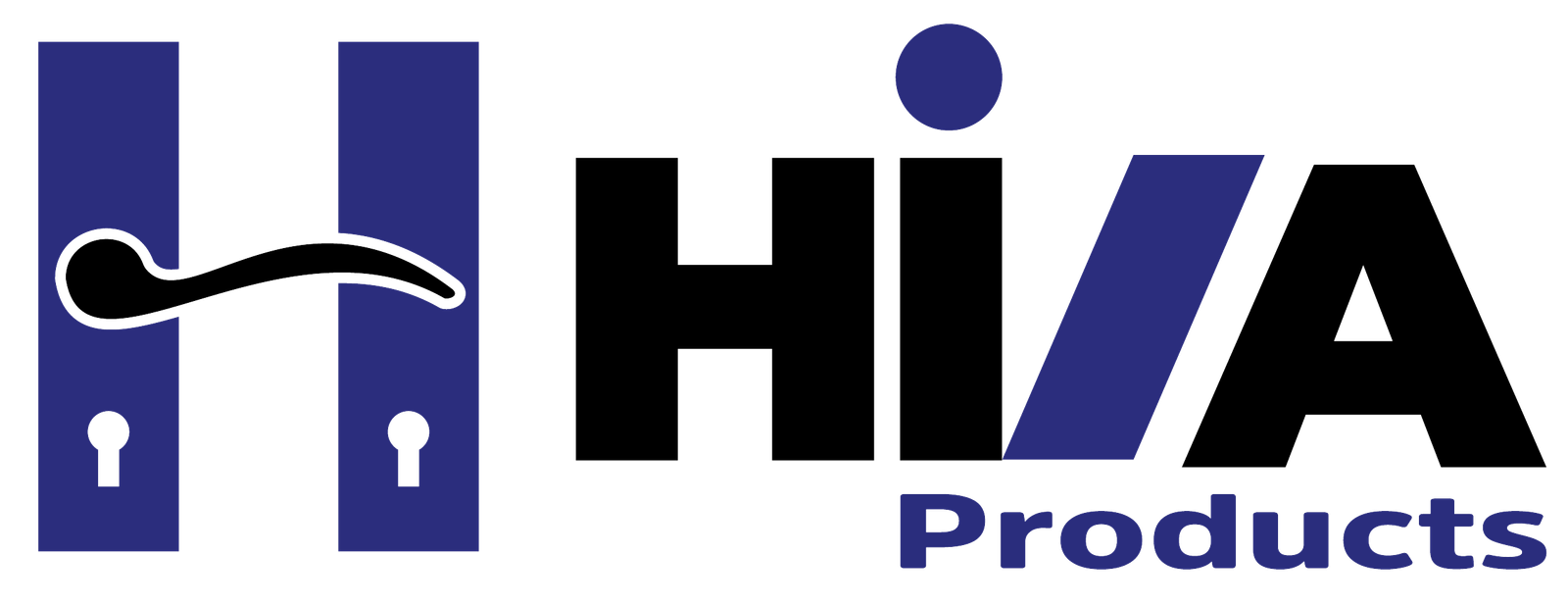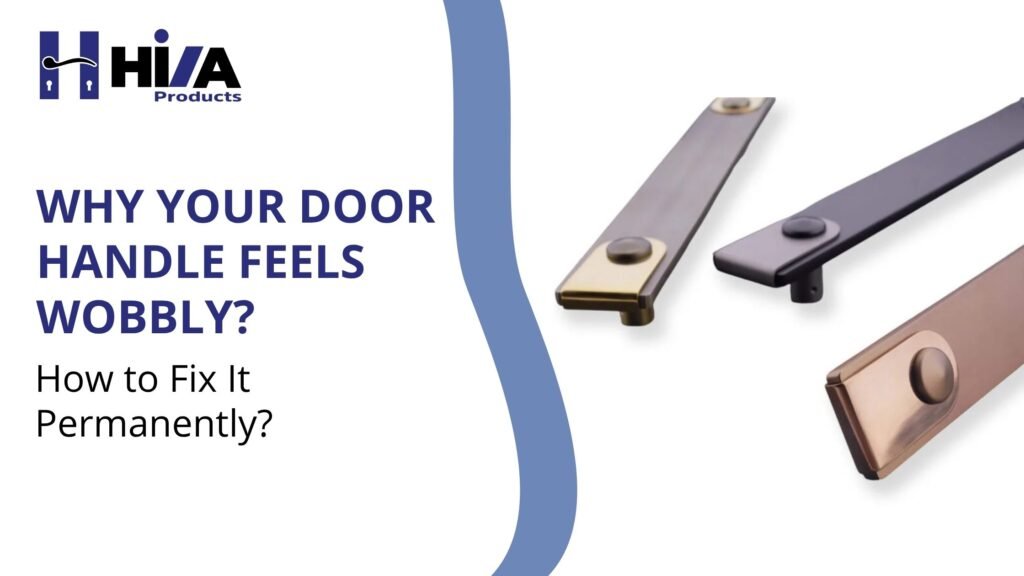Introduction: That Annoying Wiggle—Why It Deserves Your Attention?
It starts small. You turn the handle, and there’s just the faintest give. Over time, that give gives way to a wobble, then a rattle, and finally, a loose, frustrating mess. Most people dismiss a wobbly door handle as a minor nuisance, not realizing it’s often a sign of deeper design flaws, installation errors, or component fatigue.
According to leading hardware manufacturers, over 62% of door handle failures are due to mounting stress and poor fastening. And in commercial or high-traffic environments, that number climbs even higher. For entrepreneurs designing modern spaces—homes, offices, hospitality venues—these small failures quietly erode user experience and brand perception.
So why does a handle wobble? And more importantly, how can it be fixed in a way that lasts years, not weeks? This isn’t just a DIY repair blog. This is a deep dive into the mechanics of handles, the philosophy of precision hardware, and the permanent fixes that separate patchwork from professional-grade performance.
Anatomy of a Door Handle: What’s Really Moving When It Feels Loose
To understand the wobble, we need to first understand what’s actually moving. A typical lever handle assembly consists of the outer handle, a spindle (the rod that passes through the door and connects both sides), and a latch mechanism. Most setups also include an escutcheon or backplate that supports the whole system and conceals mounting screws.
When your handle feels loose, the issue usually isn’t the handle itself. It’s the breakdown in the relationship between these components:
- The spindle may not be properly seated or may be worn down from friction.
- The mounting screws could be stripping the internal threads or loosening from expansion and contraction cycles.
- The latch body inside the door might be misaligned, causing torque during each turn.
As designer Jonathan Nesci puts it, “Good hardware is about unseen alignment. The less you notice it, the better it’s doing its job.” Wobble is what happens when that alignment fails.
Common Causes Behind Wobbly Handles (and Why They’re Often Overlooked)
Now let’s decode the recurring villains behind wobbly handles:
- Inferior fastening systems: Cheap handles use short screws or screws made from soft metal. These loosen quickly, especially in hollow-core doors.
- Single-side tightening: Many installers only tighten the screws from one side, forgetting that torque from usage applies force bi-directionally. This asymmetry eventually weakens the whole structure.
- Overtightening: It sounds ironic, but cranking the screws too tightly can compress the wood or MDF door material, especially if it’s not solid-core. This reduces grip and leads to slipping.
- Thermal expansion: In Indian climates, where temperature swings can reach 20°C within a day, metal parts expand and contract—loosening otherwise snug fittings.
- Improper spindle length: A spindle that’s too short creates slop; too long, and it doesn’t allow full rotation. Both conditions induce micro-movements that eventually become macro problems.
Here’s the overlooked truth: most wobble doesn’t start at the handle. It starts inside the door.
Safety, Aesthetics, and Premature Wear
Ignoring a wobbly handle isn’t just inconvenient—it’s risky. When the structural integrity of your latch mechanism is compromised, several things happen:
- The latch doesn’t fully engage, making it easier for a forced entry.
- The finish wears unevenly, damaging coatings and inviting corrosion.
- The door alignment shifts, leading to sticky latching or misaligned locks.
In commercial spaces, a visibly loose handle signals neglect. In hospitality, it can damage reviews. In homes, it simply shortens the life of your doors. And according to a recent study by the International Facility Management Association, hardware issues are among the top five reported maintenance complaints in residential buildings.
What DIY Videos Rarely Tell You?
You’ll find countless YouTube videos recommending a quick retightening or a washer trick. These hacks may work for a few days or even weeks, but they don’t address structural alignment, material fatigue, or repeated load stresses.
For instance, using longer screws might give temporary tightness, but if they don’t thread into the core framing or reinforced plate, they’re only biting into compressed wood fibers. Result? The same wobble, back in no time.
The same goes for handle replacements. Swapping a cheap handle for another cheap one without checking spindle compatibility or backplate pressure is like changing tires without aligning the wheels.
Permanent Solutions: Re-aligning Structure, Not Just Tightening Screws
A permanent fix begins with rethinking how the handle interacts with the door as a structural system. Here’s the professional approach:
1. Disassemble Completely
Remove the handle, escutcheon, and latch system entirely. Clean the area, inspect the borehole, and check for material damage.
2. Reinforce the Core
If the door is hollow or made from soft MDF, install anchor plates or toggle bolt systems that distribute pressure. A strong core equals a strong grip.
3. Choose Handles with Through-Bolt Mounting
Handles that mount through the door (rather than screwing into each side independently) offer far better long-term stability. Hiva Products, for example, designs its premium range with steel-through fastening systems that lock the handle components together.
4. Use Thread-Locking Compounds
Apply a removable thread locker to the mounting screws. This prevents loosening due to vibration and temperature changes.
5. Calibrate Spindle and Latch Depth
Ensure the spindle fits snugly and the latch mechanism seats fully. A 1-2 mm gap can create exponential torque over time.
Professional installers treat the door handle as part of the door’s load-bearing ecosystem — not an accessory, but a structural component.
Choosing the Right Hardware: Why Build Quality, Backplate Design, and Mounting Mechanism Matter
Every handle looks strong on a display board. The real test? Tens of thousands of open-close cycles, heat, humidity, and grime. That’s where precision machining, quality materials, and intelligent engineering show their worth.
Look for:
- Solid stainless steel or brass bodies over zinc or aluminum alloys.
- Internal spring mechanisms return the handle to neutral.
- Concealed through-bolt mounting for even pressure distribution.
Hiva’s product lines are a case study in long-term thinking. Instead of relying on soft screws and thin plates, they use modular systems with precision-aligned holes, spring-reinforced rotation, and nano-coated finishes that resist corrosion and friction.
A wobbly handle is often a symptom. Smart hardware design is the cure.
How Hiva’s Precision-Engineered Handles Eliminate Wobble at the Root
What sets Hiva apart isn’t just aesthetics—it’s the invisible details:
- Spindles with anti-rotation grooves
- Handles engineered with counter-pressure springs
- Backplates that span larger surface areas to distribute stress
These are not just add-ons. They’re design choices are made with one goal: permanent alignment. No rattling. No re-tightening every six months. No user frustration.
As the company puts it, “We don’t just make handles. We make touchpoints that stand the test of time.”
Maintenance Habits That Prevent Handle Loosening Over Time
Even the best systems need occasional upkeep. Here’s what pros recommend:
- Clean around the handle regularly to prevent debris buildup.
- Avoid hanging heavy items (like bags) on levers.
- Check alignment every six months, especially on external doors.
- Keep an eye out for surface wear—a sign that deeper movement may be starting.
Prevention isn’t glamorous, but it’s the cheapest insurance against wear.
When to Replace?
Sometimes, fixing isn’t the best option. If your handle:
- Continually loosens despite reinforcement
- Has visible corrosion or rust
- Wobbles even after proper alignment
…it’s time to replace it with a better-engineered product. Ideally, one is designed not just to function, but to withstand function.
Conclusion: From Temporary Patch to Long-Term Peace of Mind
A wobbly handle is more than a minor irritation—it’s a structural signal. Fixing it permanently requires an understanding of how design, material science, and mechanics work together. With precision-engineered solutions from brands like Hiva, you can upgrade not just your hardware but your entire standard for quality.
Because in a world full of moving parts, the one you touch every day should never feel uncertain.


